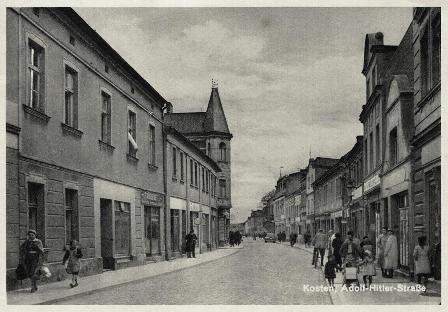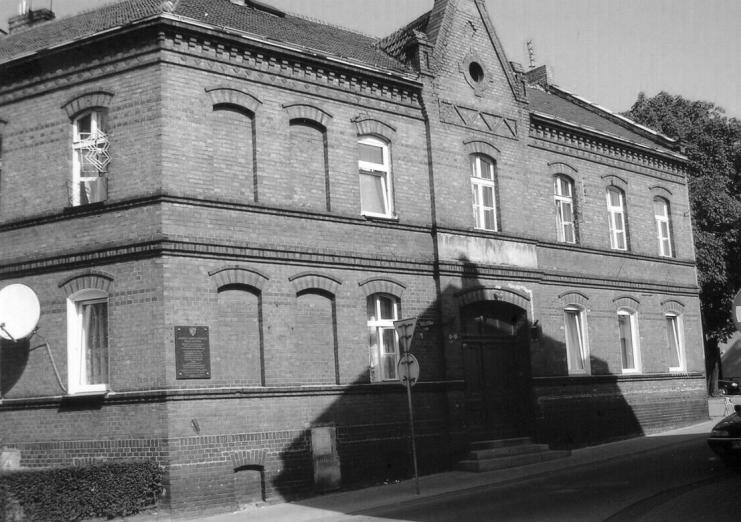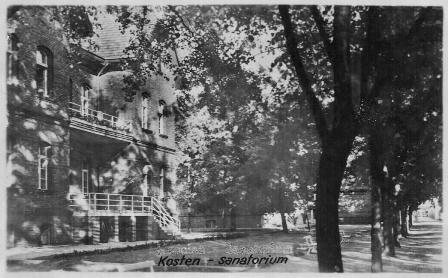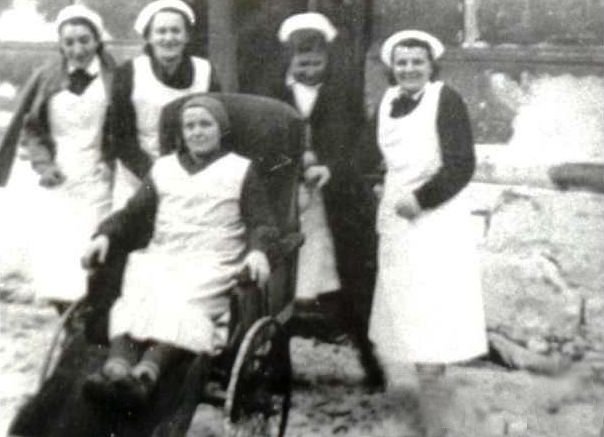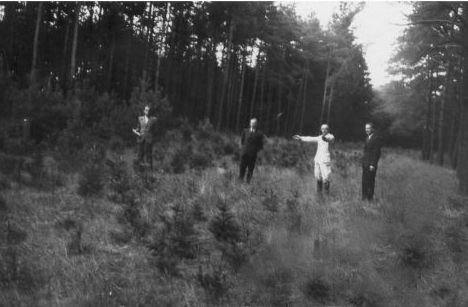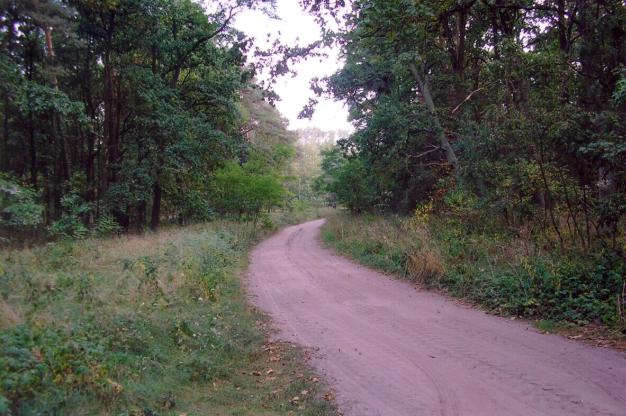Holocaust Education & Archive Research Team |
Euthanasia
Nazi Eugenics & Euthanasia T- 4 Staff T- 4 in Poland T - 4 in Germany & Austria | ||||
Koscian Executions and Euthanasia
Executions in Koscian
The German Army entered Kościan on September 7, 1939 and turned a part of the pychiatric hospital into a military hospital. In October the institution bore the name "Landesheilanstalt Kosten".
In Koscian, called Kosten during the occupation, 47 kilometres from Poznan, eight persons were executed together on 2 October 1939, eighteen on 23 October and forty-two on 7 November 1939. These executions were held in the market-place, against the wall of the Town Hall.
At the mental asylum 67 patients died from mistreatment but most were exterminated. Between the 15th & 22nd of January 1940, 534 patients were murdered. They were drugged and gassed in special car chambers at the forest nearby Jarogniewice. The bodies were buried in collective graves.
On 23 October 1939 the Germans shot:
Father Graszynski was forced to wash the blood from the stones where the victims of the executions had fallen. The execution of Mr Mieczyslaw Chlapowski of Kopaszewo, made a profound impression.
This gentleman was well known for his patriotic activities, and was chairman of various agricultural organisations in the Poznan district. He was a cousin of the former Polish Ambassador to France – Mr Alfred Chlapowski. Carried out as usual, without the formal pretext of a trial, the executions took place, the Gestapo agents packed the square with spectators. Mr Chlapowski knelt down with his rosary, saying a prayer. Then he made the sign of the cross to the crowd and cried, “Poland has not yet perished! – Long Live France – Long Live England!”
Count Szoldrski, a landowner at Golebin had a smile on his lips as he came to the place of execution in the Koscian market-place, the Germans thought he was sneering at them, so the Germans beat him until he was unable to stand. On 7 November 1939, forty-two Poles were shot in the face and left in a ditch filled with lime. In this group was a number of High School students. On the 9 November the Germans shot several dozen peasants from the neighbouring villages and buried them in the forest of Racot near Koscian. In the county of Koscian not only the local Gestapo detachment but also certain German officials distinguished themselves by their brutality.
They were as follows:
Euthanasia Actions in Koscian
The Koscian Bernadine Monastry was built between 1603 and 1611, its buildings had been used as a mental home since 1827, during the time of the Prussian annexation of Poland. In early 1940, an SS Sonderkommando arrived, carrying a dark brown bottle containing a morphine- scopolamine mixture, used to calm the patients. Probably on the 15 January 1940, the first group of naked patients received an injection and were bundled into a gassing van, inscribed with an advertisement for “Kaisers Kaffee Geschaft”, the firm itself were not involved in the murders.
On the 22 January 1940 a second group of patients were killed in an identical fashion. The same van was used later in March 1940 and July / August 1941 at the Kochanowka Hospital in Lodz. The victims included mentally handicapped patients and blind children. On the 9 February 1940 a transport from Germany with 2,750 Jewish and non-Jewish patients from mental and old people’s homes arrived in Koscian. All were killed in a similar fashion as the first patients. It is mostly probable that on the 24 February 1940 that the last transport left Koscian Mental Hospital for Jargoniewice Forest, in total 3,334 patients lost their lives during this euthanasia action in Koscian. On blank forms containing standard wording – “death was caused by” fabricated causes of death such as apoplexy, heart attacks, were inserted to veil the true crimes. In the Koscian mental home’s cemetery bogus graves were created. Cemetery fees were even charged to the relatives of the victims. The hospital in Pruszkow near Warsaw was also used as a fictitious place to where the patients had been allegedly transferred, and there died of natural causes. Among them were Frank, Grimm, Haase, Klaus, Rollmann, Rubner, Schneider, Schwarz and Zimmermann.
They exhumed the corpses, cremated them in mass graves and or destroyed them by means of slaked lime mixed with water, scattered the ashes in the forest and planted spruces to camouflage the former mass graves.
Sources: The German New Order in Poland published for The Polish Ministry of Information by Hutchinson & Company London – 1942 Private Photo sources.
Copyright Artur Hojan & Chris Webb H.E.A.R.T 2008
|
